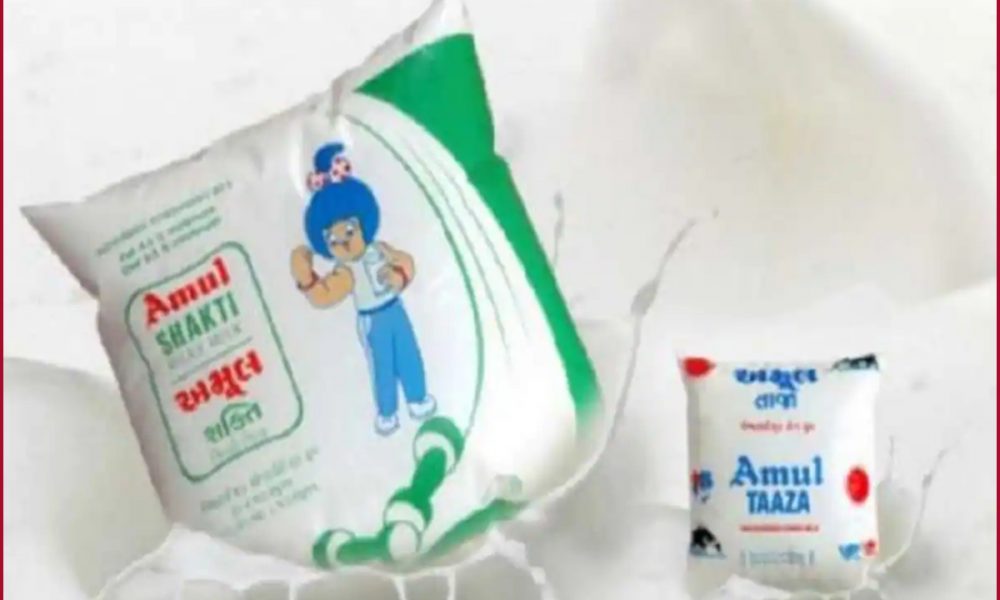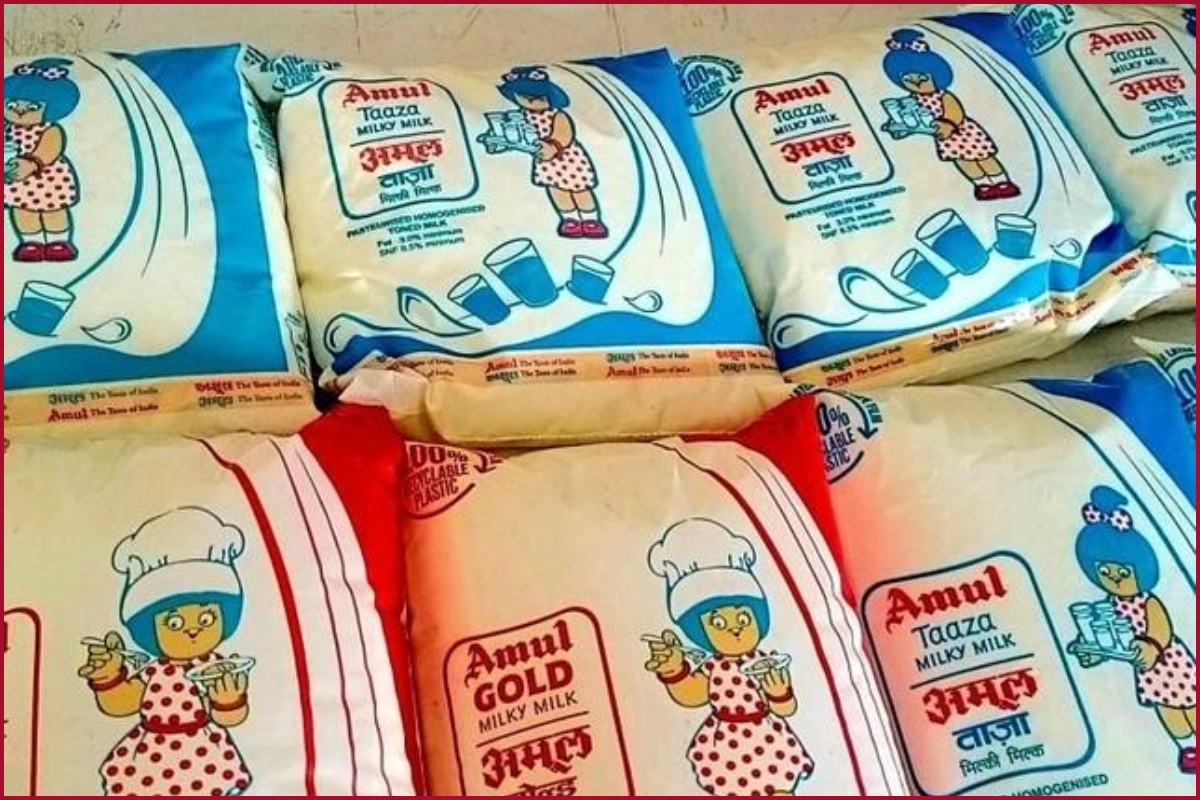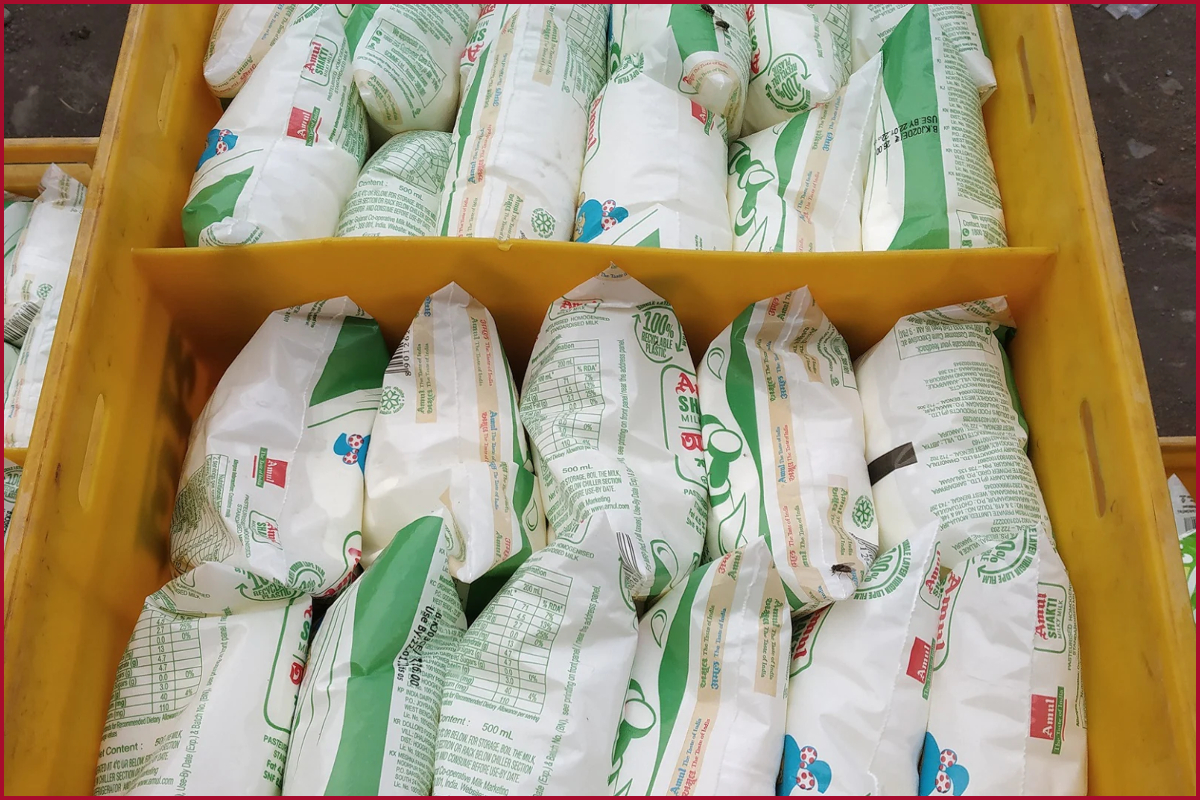
New Delhi: It must have struck you today morning that why are you paying more than usual while purchasing milk. This is because the Gujarat Cooperative Milk Marketing Federation (GCMMF), the diary giant that markets milk and milk products under the name of ‘Amul’ decided to increase the retail milk prices on Tuesday. Besides, Mother Dairy has already raised the price of milk in Delhi-NCR by the same quantum as Amul.
The milk prices have increased by Rs 2 per litre or 4% and the revised prices came into action on Wednesday. Let’s know the reason behind the increase in milk price.
How & Why Amul has raised the retail price of milk?
The official press release of Amul stated that the company has decided to increase the retail price of fresh milk by Rs 2 per litre nationwide, and the rise will come into effect from August 17. Besides, the price of Amul Gold will be Rs 31 per 500 ml, Amul Tazza will be Rs 25 per 500 ml and Amul Shakti will be Rs 28 per 500 ml.
Notably, Amul said that the price rise affected by the MRP is 4% – which is lower than the prevailing rate of inflation. Further, the release stated, “This price hike is being done due to increase in overall cost of operation and production of milk. The cattle feeding cost alone has increased to approximate 20% compare to last year. Considering the rise in input costs, our member unions have also increased farmers’ price in the range of 8-9% over previous year.”

On the other hand, Dasarath Mane, chairman and managing director of Sonai, considered the paucity in milk collection to lead to the price rise. “Our dairy is now reporting collection of 20 lakh litres of milk per day. Last August, the collection was around 23 lakh litres per day. This shortfall is the main reason why we have raised our prices,” Mane said.
He also added, “dairies across the country are reporting a shortfall of 8-10 percent in milk collection. This decrease has come even though the rainy season is in full swing, which should ideally allow for easy and abundant availability of green fodder. But things have not quite turned out that way.”
“The continuous and heavy rain in most parts of the country has resulted in lower yields of green fodder. Protein and mineral mixtures have also seen a price rise, which has increased the cost of cattle feed,” he said. Moreover, the overall effect of these price rises has led to lower milk yields and collection in the diaries.
Also, some highly-established milk-producing regions including Gujarat have witnessed an increase in the number of cattle owing to non-stop rain. Mane stated that the lumpy skin infection has become an important issue in Gujarat and has had an impact on the state’s milk collection. “The supply-demand mismatch has resulted in dairies raising their retail prices,” he said.
Rajiv Mitra, CEO of the French dairy behemoth Lactalis Prabhat stated that the daily milk collection has decreased by 10%. At present, the dairy collects 10 lakh litres of milk each day. Mitra also notified that the price of cattle feeds and other charges, just like other dairy businesses.
“Cost of production of milk has gone up compared to the previous year. Cattle feed cost alone has gone up by over 25 per cent. Also, cost of operations has gone up. There is a rise in transport, logistics, manpower, and energy costs. Because of the rise in input costs, milk procurement rates have increased by 15-25% over the same time last year,” he said.

What’s the future outlook for milk prices?
Most of the diaries have discussed additional milk price increases before the flush season starts in October. Owing to plenty of green food and water, animals in the dairy sector naturally produce more milk during the flush season. “Till the flush starts, we can see price bumps in the retail and procurement markets,” said a private dairy owner from Maharashtra.”




